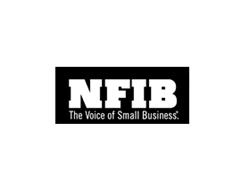Credit Turmoil Has Little Impact on Small Business
Washington, DC, September 13, 2007--Despite reports of a credit crunch and calls for the Fed to cut interest rates to save the economy, there doesn't seem to be a credit problem on Main Street, according to the August National Federation of Independent Business Small Business Economic Trends Report.
The report shows lending to finance the normal production of GDP is still running smoothly.
The Index of Small-Business Optimism fell 1.3 points to 96.3 (1986=100) and has been below its historical average (100.2) for 17 of the past 18 months and below 100 all year, confirming the sub-par growth the economy has experienced.
Regular borrowing activity was reported by 35% of owners surveyed, down one point from last month. The net percent of owners reporting loans harder to get in recent months rose two points to a net 7% (7 percent said loans were harder to get, and nobody said loans were easier to obtain), arguably tighter, but the 7% mark has been reached or passed several times in the last 12 months.
Only 3% of the owners cited the cost and availability of credit as their No. 1 business problem, far from the record 37% reached in 1982 and typical of readings for the past decade. Thirty-five percent reported all their credit needs met; 4% reported problems obtaining desired financing, typical of readings for the past few years.
The net percent of owners reporting higher rates on their short-term loans was 14% (seasonally adjusted), two points above July, but one of the lowest readings since 2004.
"Small-business owners managed to do some hiring in August, but reductions in some industries left overall job creation on the negative side," said NFIB Chief Economist William Dunkelberg.
Fifteen percent of owners reported increasing employment an average of 2.3 workers per firm compared to 11% who reported workforce reductions averaging 3.3 workers – an average decrease of 0.1 employees per firm for all firms. Twenty-five percent (seasonally adjusted) reported unfilled job openings, up two points from July; the 34-year average is 22.
"This indicates that the unemployment rate will stay in the 4.5 percent range in the months to come," said Dunkelberg.
Hiring and creating more GDP remains a difficult problem for many owners. Fourteen percent reported that the availability of qualified labor was their top business problem, about the same as June and July. Only taxes and the cost and availability of insurance received more votes for the No. 1 business problem.
Over the next three months, 17% plan to create new jobs, and 8 % plan workforce reductions, up one point, yielding a seasonally adjusted net 15% of owners planning to create new jobs – up two points from July. Fifty-two percent reported hiring or trying to hire new workers, and 84 percent reported few or no qualified applicants.
Capital spending remained soft in August. The frequency of reported capital outlays over the past six months was unchanged at 58% of all firms. Forty-two percent reported spending on new equipment, 24% acquired vehicles, and 12% improved or expanded their facilities.
Plans to make capital expenditures over the next few months were steady at a rather weak 27%.
Sales trends were not encouraging: seasonally unadjusted 30% of all owners reported higher sales, and 26% lower sales, producing a seasonally adjusted net negative 4% of all firms with higher sales in the most recent three-month period – compared to the prior three months – down three points from July.
There was some good news on the inflation front. The net percent of owners reporting higher average selling prices dropped six points to a net 13%, the lowest reading since February.
Labor costs, the largest cost of doing business for most small firms, continued to pressure earnings in August with 24%reporting higher worker compensation.
Of the 20% of owners reporting higher earnings, 60% cited stronger sales, 5% reported lower labor costs, and 8% credited higher selling prices. Of the 36% reporting lower earnings, 44%cited weaker sales, 11% blamed higher labor costs, and 8%each cited higher materials costs, energy, higher insurance costs and lower selling prices.
